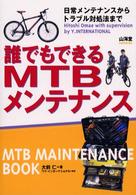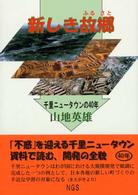Full Description
Undergraduate research has a rich history, and many practicing researchers point to undergraduate research experiences (UREs) as crucial to their own career success. There are many ongoing efforts to improve undergraduate science, technology, engineering, and mathematics (STEM) education that focus on increasing the active engagement of students and decreasing traditional lecture-based teaching, and UREs have been proposed as a solution to these efforts and may be a key strategy for broadening participation in STEM. In light of the proposals questions have been asked about what is known about student participation in UREs, best practices in UREs design, and evidence of beneficial outcomes from UREs.
Undergraduate Research Experiences for STEM Students provides a comprehensive overview of and insights about the current and rapidly evolving types of UREs, in an effort to improve understanding of the complexity of UREs in terms of their content, their surrounding context, the diversity of the student participants, and the opportunities for learning provided by a research experience. This study analyzes UREs by considering them as part of a learning system that is shaped by forces related to national policy, institutional leadership, and departmental culture, as well as by the interactions among faculty, other mentors, and students. The report provides a set of questions to be considered by those implementing UREs as well as an agenda for future research that can help answer questions about how UREs work and which aspects of the experiences are most powerful.
Table of Contents
Front Matter
Summary
1 Introduction
2 Heterogeneity of Undergraduate Research Experiences: Characterizing the Variability
3 Undergraduate Research Experiences in the Larger System of Higher Education: A Conceptual Framework
4 Research Documenting Student Participation in UREs
5 The Role of Mentoring
6 Faculty Impact and Needs
7 Need for Research About UREs
8 Considerations for Design and Implementation of Undergraduate Research Experiences
9 Conclusions and Recommendations
Appendix A: STEM Participation Rates
Appendix B: Committee Questions to Undergraduate Institutions and Selected Responses
Appendix C: Committee and Staff Biographies
Contents
1 Front Matter; 2 Summary; 3 1 Introduction; 4 2 Heterogeneity of Undergraduate Research Experiences: Characterizing the Variability; 5 3 Undergraduate Research Experiences in the Larger System of Higher Education: A Conceptual Framework; 6 4 Research Documenting Student Participation in UREs; 7 5 The Role of Mentoring; 8 6 Faculty Impact and Needs; 9 7 Need for Research About UREs; 10 8 Considerations for Design and Implementation of Undergraduate Research Experiences; 11 9 Conclusions and Recommendations; 12 Appendix A: STEM Participation Rates; 13 Appendix B: Committee Questions to Undergraduate Institutions and Selected Responses; 14 Appendix C: Committee and Staff Biographies








